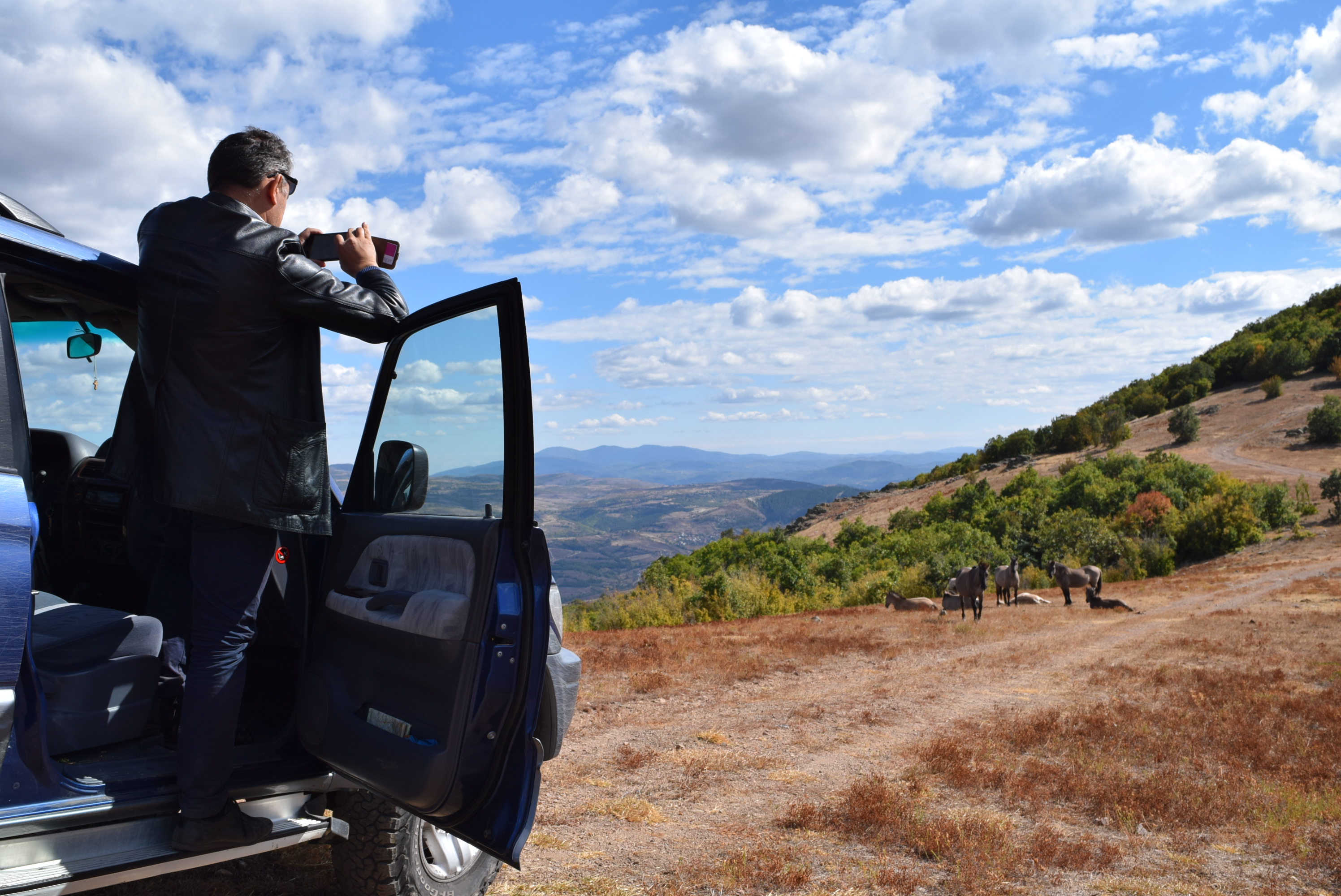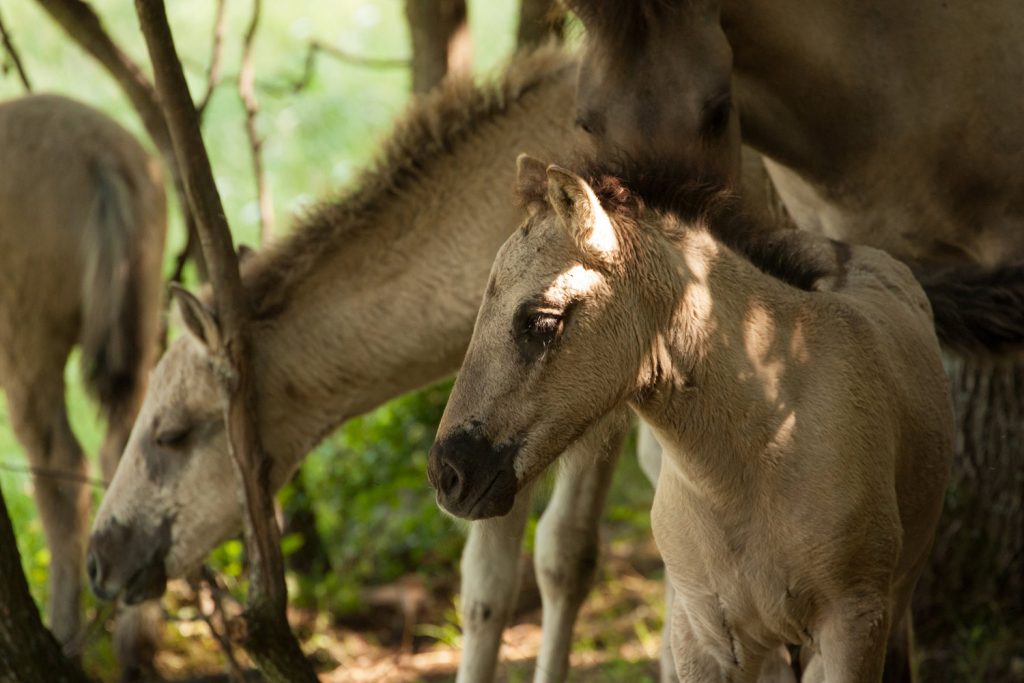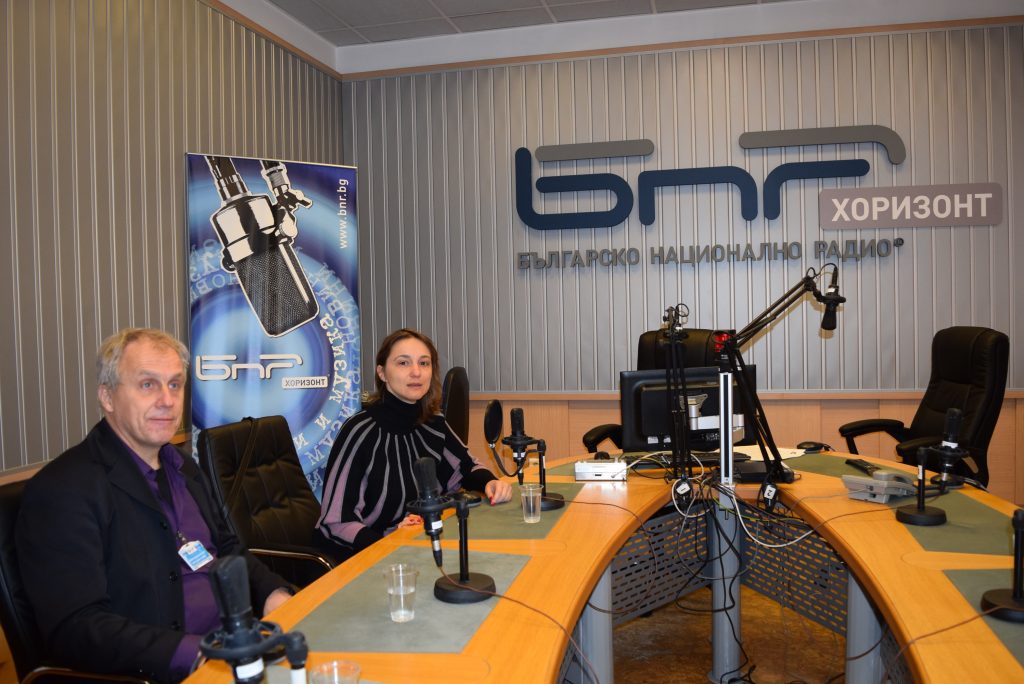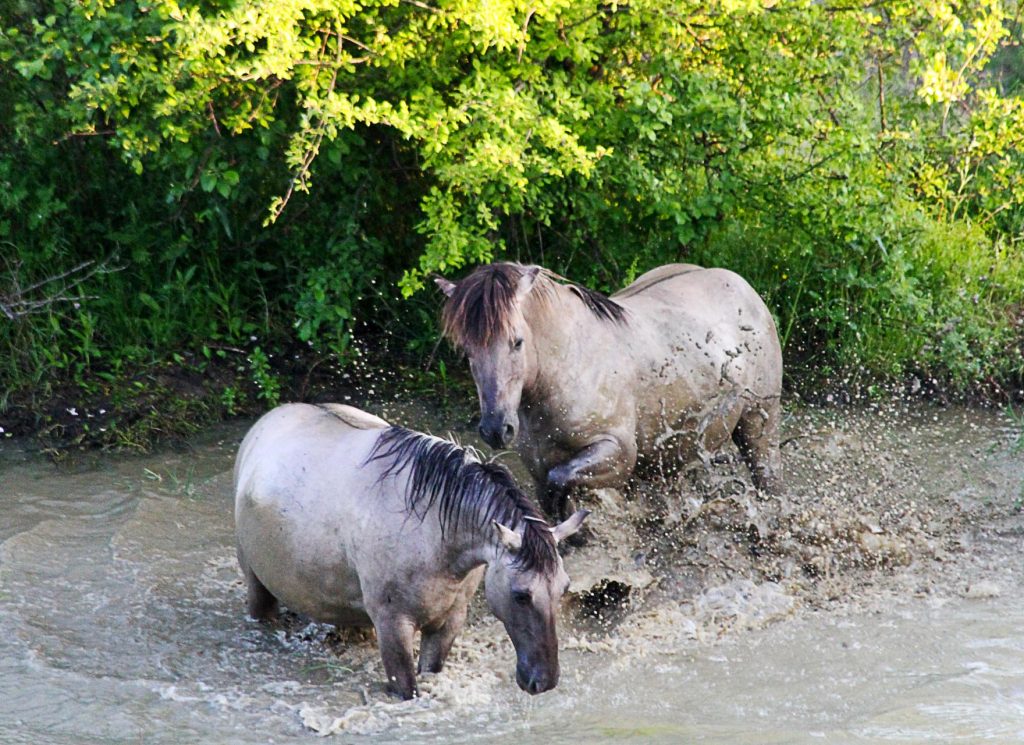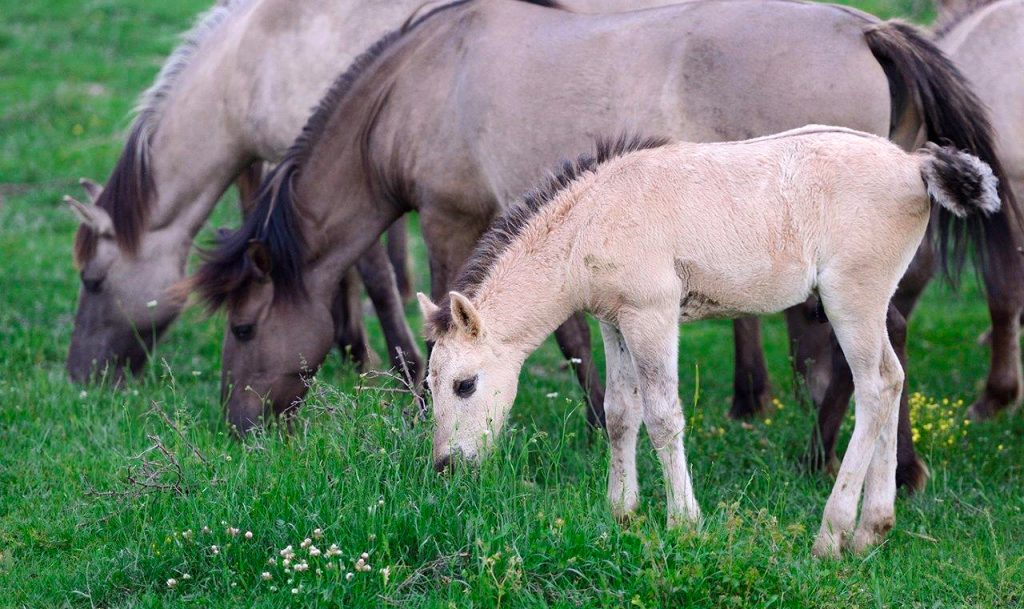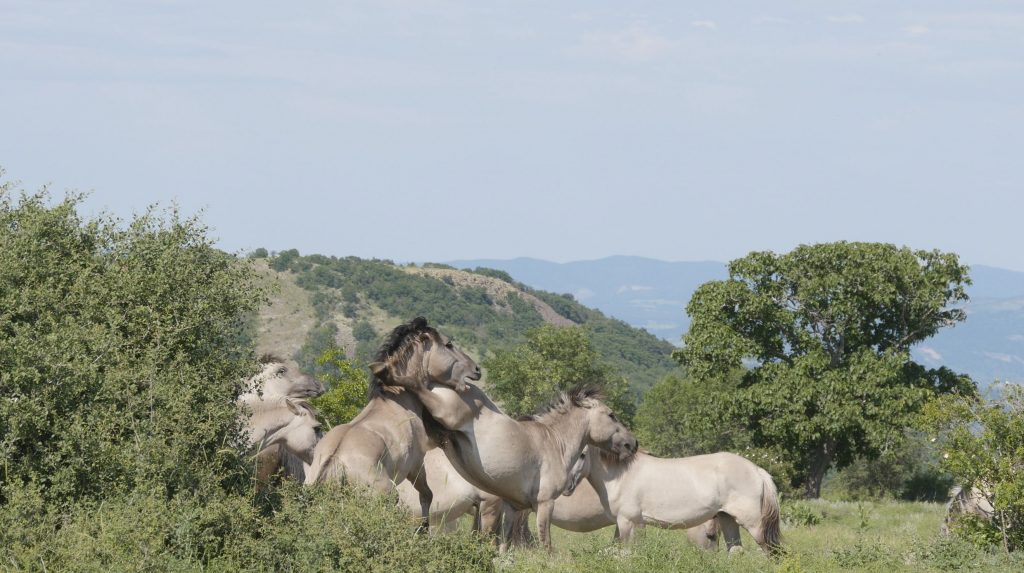On 24 September, the Netherlands Ambassador, Bea ten Tusscher travelled through the Eastern Rhodopes to gain first-hand experience about Status WILD Initiative, the Dutch-funded project of foundations ARK Nature and Friends of the Rhodopi Cows.
Guided by the Status WILD colleagues Hristo Hristov and Renée Meissner, she observed the impact of reintroduction of the Konik horses into the wild nature and biodiversity, as well as succeeded to spot the wild living horses freely grazing in the forests above the village of Nanovitsa, Momchilgrad Municipality. Ambassador ten Tusscher had also a chance to see the reintroduced with Dutch support European bison and the biggest population of fallow deer in the area of Studen Kladenets Resevoir.
This visit sparked ideas for international cooperation in the field of nature management and rewilding activities and perhaps could also inspire European adventure tourists to go on Rhodopes safari, reads a publication about the visit on the website of the Dutch Ministry of Agriculture, Nature and Food Quality.
A couple of days later, experts of Status WILD and the Bulgarian Ministry of Environment and Water visited the Koniks area near Nanovititsa, met with local farmers, hunters and tourism entrepreneurs, as well as with Municipality’s representatives.
It all started in 2011 when ARK Nature and the Bulgarian foundation Friends of the Rhodope Cow released a group of 15 Konik horses into nature near Sbor in the Eastern Rhodopes in southern Bulgaria. Later an additional 27 horses were released in the Boynik area west of Sbor.
The two horse herds have successfully adapted to the Eastern Rhodopes nature dealing with the harsh winters and hot summers, finding food on their own, as well as surviving from wolf attacks. The number of the horses has doubled within a couple of years only!
This year 16 newly born foals increased the herds of the freely living in the wild herds of the Konik horses in the Eastern Rhodopes up to above 70.
The freely living horses have a crucially important role for the protection of the nature and biodiversity in the Eastern Rhodopes. Grazing almost all the year around, they are keeping the open landscape of the region. Becoming a tourist attraction, they are gradually turning into the new symbol of the Rhodopes Mountain.
The team of the Status WILD Initiative considers this as an outstanding success of the reintroduction of the freely living horses in the Eastern Rhodopes, which have hosted wild horses in the ancient times.
The Konik horse (Еquus caballos) is a “recovery” / “look- a-like” of the Tarpan (Equus ferus ferus) and also known as the Eurasian wild horse. This is an extinct subspecies of the wild horse and a prehistoric wild horse type that ranged from Southern France and Spain and eastwards to central Russia, as well as once in Bulgaria, which is proven by findings of palaeontologists. The Tarpan got extinct in wild nature in the end of 19th century. A couple of decades later several attempts started to re-create a Tarpan look-a-like through selective breeding with domestic races which allegedly retained much Tarpan DNA in their genomes. This breed, which has been reintroduced in Bulgaria, originates from a Polish Tarpan re-breeding project. It is also known as Konik (Polish for ‘little horse’). Koniks have been successfully reintroduced in the Netherlands, Latvia, the UK, France, Belgium and Germany.


